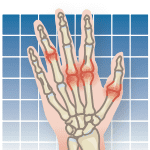Many people with mild symptoms of thumb arthritis improve with a limited period of anti-inflammatory medication and avoidance of painful activities, with or without some type of splint. A cortisone injection into the sore area usually is helpful, at least temporarily. Relief usually lasts about two months. One or two injections provide permanent relief for about 50 percent of people with this problem. When conservative treatment is no longer effective, surgery may be your only option. The most commonly performed surgery for thumb arthritis involves removal of the arthritic surfaces and insertion of a material-your own tendon or a synthetic substance-between the two ends of the bones. The success rate for this procedure is about 90 percent. Another surgical procedure is fusion of the two bones that make up the joint. This generally eliminates the painful symptoms but produces some loss of motion and joint stiffness.
To continue reading this article or issue you must be a paid subscriber.
Sign in





























